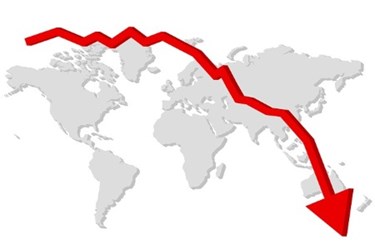Medical Device Disruption: Eminent Change Could Cost $34 Billion
By Chuck Seegert, Ph.D.

The medical device market segment is poised for disruptive change according to an AT Kearney report. In fact, the disruption may already be underway, and $34 billion of the market share could be at stake.
The medical device industry has enjoyed stability for decades, even during tough economic times. With the substantial profit margins that have been available, relatively straightforward business models have flourished without the need for extensive innovation or differentiation.
The future of the medical device industry will be much different, and it has already started down the path that will take it there, according to a recent press release from AT Kearney. The company, a leading management consulting firm with a global footprint and offices in 40 countries, has conducted a study titled Medical Devices: Equipped for the Future?
The study included interviews with more than 30 medical device executives who qualified to be part of the study due to the global firms they manage. All told, the companies these executives control account for $80 billion in annual revenues and a diverse array of products and sectors.
According to the study, the five key findings of the study that will negatively impact the medical device market if they are not addressed are:
Power shift to payers and providers — Evidence-based decisions and the funding channels are increasingly challenging the traditional business model of clinician choice. Payers and providers are evaluating medical devices based on safety and procedural efficacy as well as cost and value.
Heightened regulatory scrutiny — In recent years there have been recalls that are high-profile and damaging. Regulators have been tightening up existing regulations and adding new ones. FDA audits have increased by 40 percent in the past 12 months and the number of warning letters has risen by 24 percent over the past two years.
Unclear sources of innovation — Because of regulatory and reimbursement issues, medical device companies are focusing their R&D efforts on improving already approved devices rather than developing truly innovative new products. New products that affect the way standardized procedures are conducted are often reluctantly included on the list of reimbursable products. Additionally, startups and small companies are finding it difficult to find capital to fund the increasing cost to bring new innovations to market.
New healthcare delivery models — As payers’ resource constraints intensify, and powerful analytical tools make it easier to evaluate large volumes of data, patient pathways are being modified to obtain better outcomes for less money. For example, increasingly the emphasis is to shift care out of hospitals and into the community.
Need to serve lower socioeconomic classes — Medical device companies seeking growth will need to target less affluent segments that can offer significant absolute profit potential with the right solutions. Accessing growth segments, even in traditional markets, will require new business models, lower price points, and more value-based product offerings than those of today.
The shift in the medical device industry has been recognized by others as well. Recently, in an article published on Med Device Online, studies were discussed that projected that the global self-care medical device market would grow to USD $16.9 billion by 2019.
